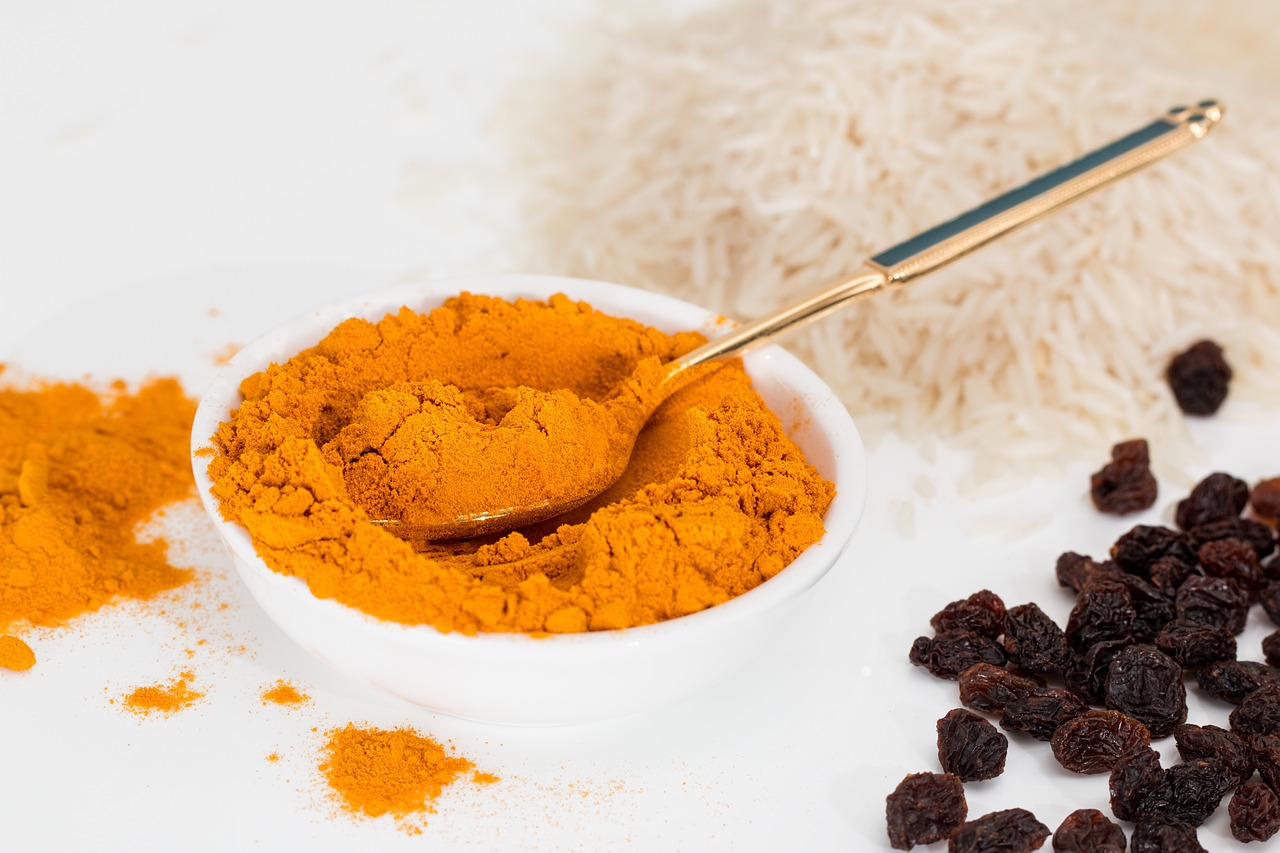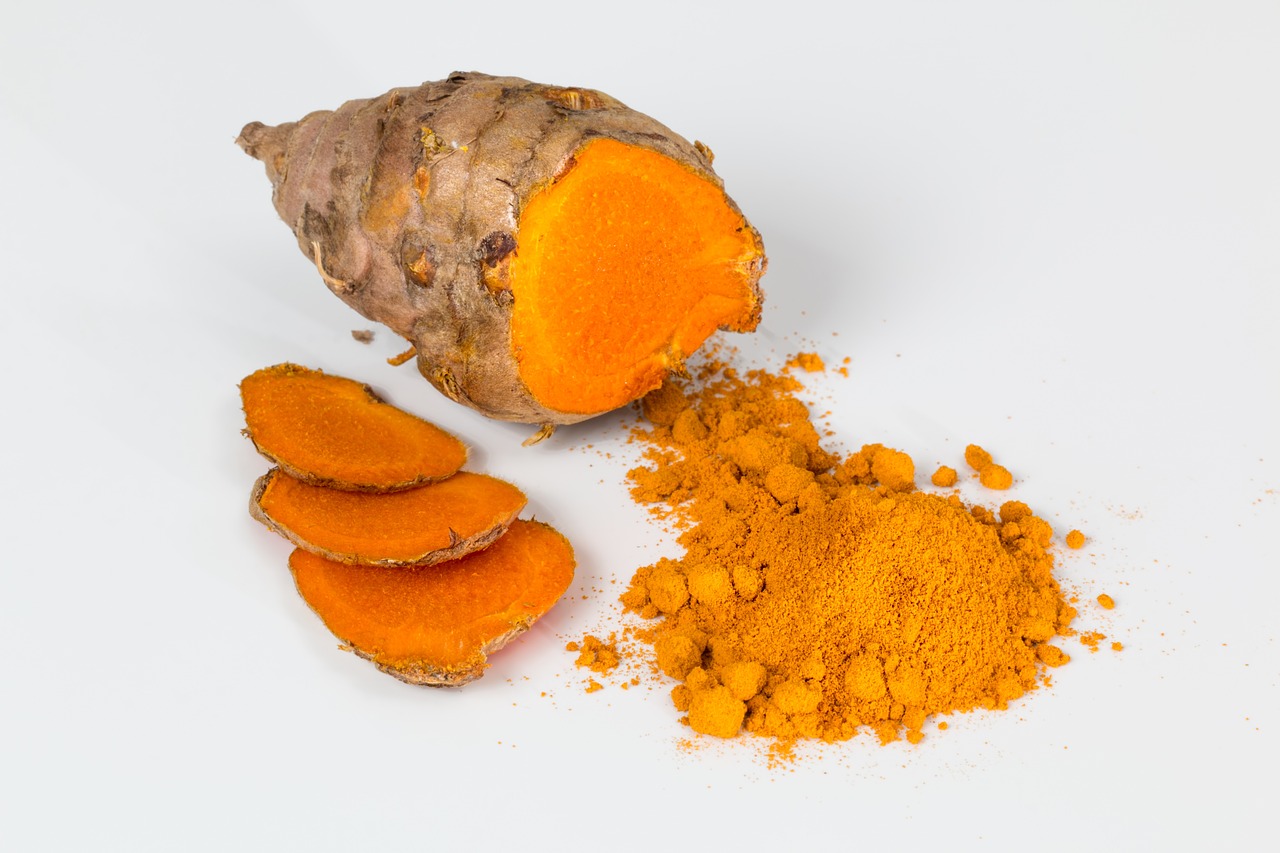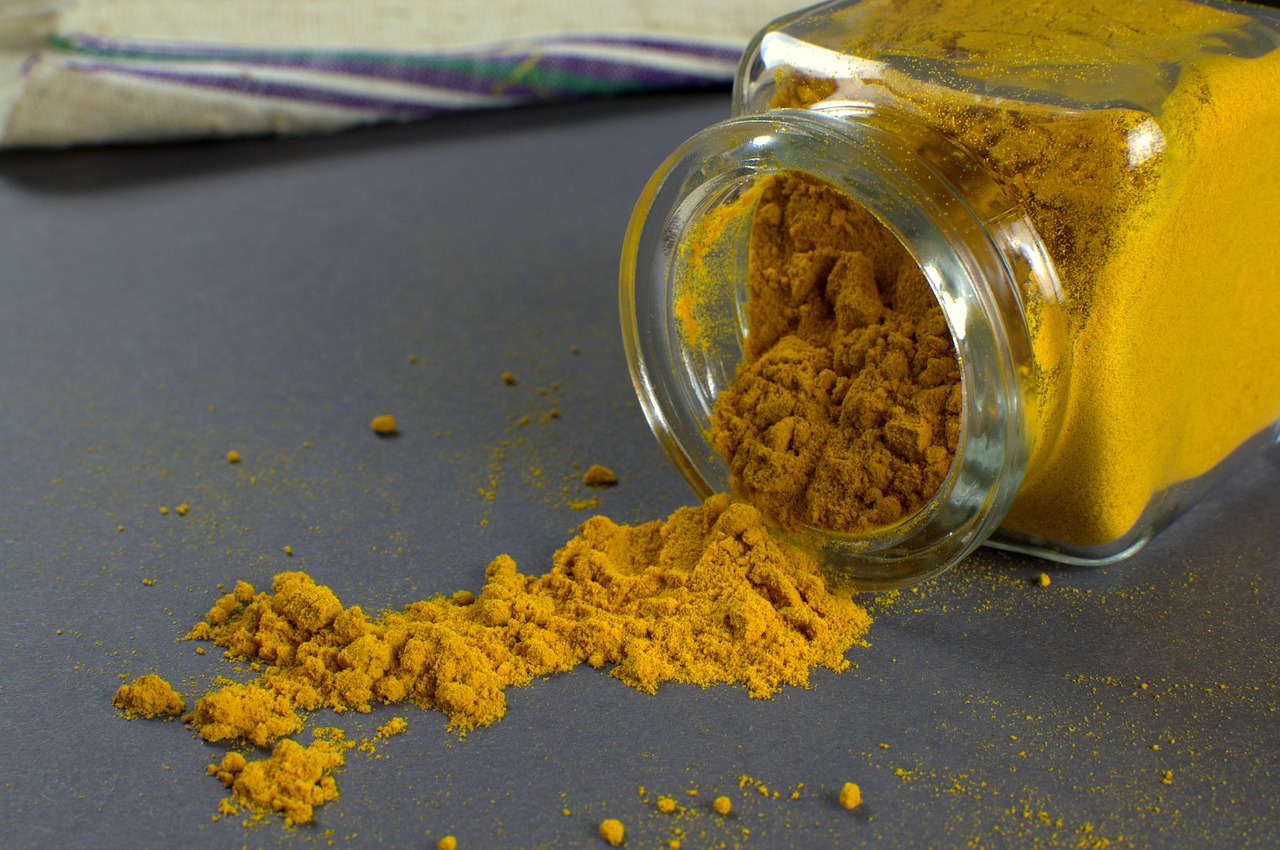Turmeric, a bright orange spice often associated with Indian cuisine, adds both vibrant color and a distinct flavor to a wide range of dishes. From savory curries to flavorful rice pilafs, turmeric is a key ingredient in many traditional recipes. Its earthy and slightly bitter taste perfectly complements the rich flavors of meat, vegetables, and lentils. Moreover, turmeric is renowned for its numerous health benefits, such as anti-inflammatory properties and potential to boost the immune system. Whether you’re a seasoned chef or an amateur home cook, incorporating turmeric into your meals can elevate the flavors and add a healthy twist to your culinary creations.

Spice Profile of Turmeric
Flavor and Aroma
Turmeric is a spice that is known for its unique flavor and aroma which can greatly enhance the taste of a dish. It has a warm, earthy, and peppery flavor that is slightly bitter and pungent. Along with its distinct flavor, turmeric also has a subtle aroma that is reminiscent of ginger and orange. This combination of flavors and aroma makes turmeric a versatile spice that can be used in a variety of cuisines.
Color
One of the most striking features of turmeric is its vibrant yellow color. This intense hue comes from the natural pigment called curcumin present in turmeric. The bright yellow color can give a beautiful golden hue to dishes, adding visual appeal to your meals. It is worth noting that turmeric can stain surfaces easily, so it is important to handle it with care and avoid contact with clothes or countertops.
Commonly Used Forms
Turmeric is available in various forms, making it convenient to use in cooking and other applications. The most common form of turmeric is the powdered spice, which is made by grinding dried turmeric roots. This powdered form is widely used in recipes as it is easy to measure and adds flavor and color to the dish. Other forms of turmeric include fresh turmeric root, turmeric paste, and turmeric extract. Each form has its own unique characteristics and can be used differently based on the recipe.
Storage Tips
To ensure the longevity and quality of your turmeric, proper storage is essential. It is recommended to store turmeric powder in an airtight container in a cool, dry, and dark place. This will help maintain the flavor, aroma, and color of the spice. Fresh turmeric should be stored in the refrigerator, wrapped in a paper towel to absorb moisture. By following these storage tips, you can enjoy the full flavor and benefits of turmeric for a longer period.
Basic Usage of Turmeric
As a Spice in Food
As a staple spice in many cuisines, turmeric is commonly used to add flavor and color to various dishes. It can be added directly to curries, soups, stir-fries, and other savory dishes to enhance their taste. Turmeric can be used on its own or as part of a spice mix to season meats, vegetables, and grains. Its warm and earthy flavor makes it a versatile spice that complements a wide range of ingredients.
In Spice Mixes and Blends
Turmeric is a key ingredient in many spice mixes and blends, adding its unique flavor and color to the overall profile. It is often combined with spices like cumin, coriander, ginger, and cinnamon to create aromatic blends used in Indian, Middle Eastern, and Southeast Asian cuisines. Spice blends like curry powder, garam masala, and Moroccan spice mix often feature turmeric as a prominent component.
As a Natural Food Coloring
Beyond its culinary uses, turmeric is also valued for its vibrant yellow color. It can be used as a natural food coloring agent to give a bright and appealing hue to a variety of dishes. Turmeric can be used to color rice, noodles, sauces, and even desserts. Its natural coloring properties make it a healthier alternative to artificial food dyes.

Traditional Turmeric Dishes
Curries and Stews
Turmeric is a vital ingredient in traditional curries and stews, particularly in Indian and Southeast Asian cuisines. Its warm and earthy flavor blends seamlessly with other spices to create rich and flavorful dishes. Whether it’s a classic chicken curry or a vegetable stew, turmeric adds depth and complexity to these comforting dishes.
Rice and Pilaf Dishes
In many cultures, turmeric is used to infuse rice and pilaf dishes with a beautiful golden color and an aromatic flavor. Adding turmeric to rice during cooking can transform a simple side dish into a vibrant and delicious accompaniment to any meal. The flavor of turmeric pairs particularly well with rice, creating a fragrant and satisfying combination.
Soups and Broths
Turmeric also finds its way into soups and broths, providing not only flavor but also a vibrant appearance. Adding a pinch of turmeric to a soup can brighten it up and give it a visually appealing yellow hue. Whether it’s a comforting bowl of chicken noodle soup or a hearty lentil soup, turmeric can be a secret ingredient that elevates the overall taste.
Turmeric in Beverages
Golden Milk
Golden milk, also known as turmeric latte, is a popular beverage that highlights the health benefits of turmeric. This creamy and aromatic drink combines turmeric with milk, honey, and warming spices like cinnamon and ginger. Served hot or cold, golden milk is a soothing and nourishing beverage that can be enjoyed at any time of the day.
Turmeric Tea
Turmeric tea is another soothing beverage that can be made by steeping turmeric powder or fresh turmeric slices in hot water. The tea can be enhanced with a squeeze of lemon juice and a drizzle of honey for added flavor. Turmeric tea is known for its potential health benefits and is often consumed to support digestion and boost immunity.
Smoothies and Juices
Turmeric can also be incorporated into smoothies and juices, adding both color and nutritional benefits to these drinks. Combining turmeric with fruits like mango, pineapple, or banana can create a vibrant and refreshing smoothie. Additionally, turmeric juice can be made by blending fresh turmeric root with water and other ingredients for a healthy and invigorating beverage.

Turmeric in Baked Goods
Cakes and Desserts
Turmeric can add an unexpected twist to cakes and desserts, infusing them with its warm and earthy flavor. Adding a small amount of turmeric to cake batter can create a subtle and unique taste that pairs well with citrus, chocolate, and other sweet flavors. Turmeric can also be used in desserts like custard, ice cream, and puddings, providing a vibrant golden hue.
Breads and Pastries
In bread and pastry recipes, turmeric can be incorporated as a natural coloring agent to give an appealing yellow color to the final product. Whether it’s a savory bread roll or a sweet pastry, turmeric can add a visual appeal that makes the baked goods stand out. Its mild flavor ensures that it doesn’t overpower the other ingredients in the recipe.
Turmeric in Sauces and Condiments
Mustard
Turmeric is often used in the production of mustard, contributing to both its vibrant yellow color and its distinct flavor. Whether it’s a classic yellow mustard or a spicy Dijon mustard, turmeric adds a warm and tangy note that complements the sharpness of mustard seeds. The addition of turmeric gives mustard a unique twist and enhances its overall taste profile.
Mayonnaise
The addition of turmeric can elevate your homemade mayonnaise, giving it a lovely golden hue and a subtle hint of flavor. Turmeric mayonnaise can be used as a condiment for sandwiches, burgers, or as a dip for fries and vegetables. Its vibrant color can make your dishes visually appealing, enticing everyone to take a bite.
Chutneys
Chutneys are a flavorful accompaniment to many Indian and Middle Eastern dishes, and turmeric can play a role in enhancing both their taste and appearance. Turmeric can be added to chutneys made with ingredients like tomatoes, mangoes, or coconut, creating a vibrant and aromatic condiment. The addition of turmeric not only enhances the flavor profile but also provides the chutney with a beautiful golden color.
Turmeric in Pickling and Fermentation
Pickles
Turmeric is a popular ingredient in pickling recipes, as its vibrant yellow color can make the pickles visually appealing. Whether it’s pickled cucumbers, carrots, or cabbage, adding turmeric creates a bright and cheerful appearance. The earthy flavor of turmeric also complements the tanginess of pickles, creating a delicious and well-rounded taste.
Kimchi
Kimchi, a traditional Korean fermented side dish, often includes turmeric as an ingredient. Along with its natural coloring properties, turmeric adds an extra layer of flavor to the spicy and tangy profile of kimchi. The combination of turmeric with other ingredients like garlic, ginger, and chili peppers creates a complex and addictive flavor.
Sauerkraut
In addition to kimchi, turmeric can also be used in the fermentation process of sauerkraut. The vibrant yellow color of turmeric adds visual interest to the sauerkraut and provides a subtle earthiness to balance the tanginess. Turmeric-infused sauerkraut can be enjoyed as a topping for sandwiches or as a side dish to accompany various meals.
Turmeric in Marinades and Rubs
Marinades for Meat, Poultry, and Seafood
Turmeric can be used in marinades to impart a vibrant color and a depth of flavor to meats, poultry, and seafood. Combining turmeric with other spices, herbs, and acidic ingredients can create a flavorful marinade that tenderizes and enhances the taste of the protein. Whether it’s a tandoori chicken marinade or a turmeric-spiced seafood marinade, the possibilities are endless.
Dry Rubs for Grilling and Roasting
Dry rubs are a popular way to infuse flavor into grilled meats and roasted vegetables, and turmeric can be a standout ingredient in these blends. Mixing turmeric with other spices like paprika, cumin, and garlic powder creates a fragrant and aromatic rub that adds a beautiful golden crust to grilled or roasted dishes. The combination of turmeric and smoky flavors from grilling or roasting creates a delicious and visually appealing result.
Turmeric as a Preservative
Pickling Agent
Turmeric’s natural antimicrobial properties have long been utilized in pickling as a means of preserving fruits and vegetables. When used as a pickling agent, turmeric helps prevent the growth of harmful bacteria and extends the shelf life of the pickled items. The bright yellow color of turmeric also adds aesthetic appeal to the preserved foods.
Meat and Seafood Preservation
Turmeric can also be used as a preservative in curing and marinating meats and seafood. Its antimicrobial and antioxidant properties help inhibit the growth of harmful microorganisms and prevent spoilage. Traditional preparations like turmeric-preserved fish showcase the preservative qualities of turmeric, allowing the fish to be enjoyed for an extended period.
Antimicrobial Properties
In addition to its use as a pickling agent and meat preservative, turmeric’s antimicrobial properties make it a valuable ingredient in combating food spoilage. By adding turmeric to homemade sauces, condiments, and fermented foods, you can enhance their shelf life and maintain their quality for a longer time. The natural antimicrobial properties of turmeric make it a handy tool in preserving various food items.
Turmeric in International Cuisine
Indian Cuisine
Turmeric is a quintessential ingredient in Indian cuisine. It is used in a wide range of dishes, from curries and biryanis to chutneys and pickles. Turmeric’s warm and earthy flavor is a foundation of many Indian spice blends, such as garam masala and curry powder. Indian cuisine often celebrates the vibrant yellow color that turmeric imparts to dishes, making it an integral part of the culture and culinary heritage.
Southeast Asian Cuisine
In Southeast Asian cuisine, specifically Thai and Indonesian cuisines, turmeric plays a crucial role in creating bold and aromatic flavors. It is commonly used in dishes like yellow curry, satay, and rendang. Turmeric adds its distinct taste and vibrant color to these dishes, creating a harmonious blend of flavors that is unique to the region.
Middle Eastern Cuisine
Middle Eastern cuisine also embraces the use of turmeric in many dishes, particularly in spice blends and rice dishes. Turmeric is an essential ingredient in popular spice mixes like baharat and ras el hanout, adding depth and complexity to savory dishes. In dishes like biryani and mujadara, turmeric gives a rich golden hue and a subtle bitter note that balances the overall flavor profile.
In conclusion, turmeric is a versatile spice that adds not only a distinct flavor but also a vibrant color to a wide array of dishes. Whether used in traditional curries, marinades, baked goods, or as a natural food coloring, turmeric has established itself as an indispensable ingredient in countless cuisines around the world. Its warm and earthy flavor, along with its potential health benefits, makes turmeric a spice worth exploring in your culinary adventures. So go ahead, sprinkle some turmeric into your next dish and enjoy the flavorful journey it takes you on.

